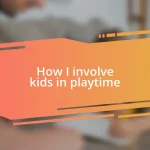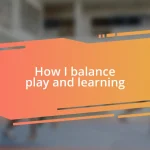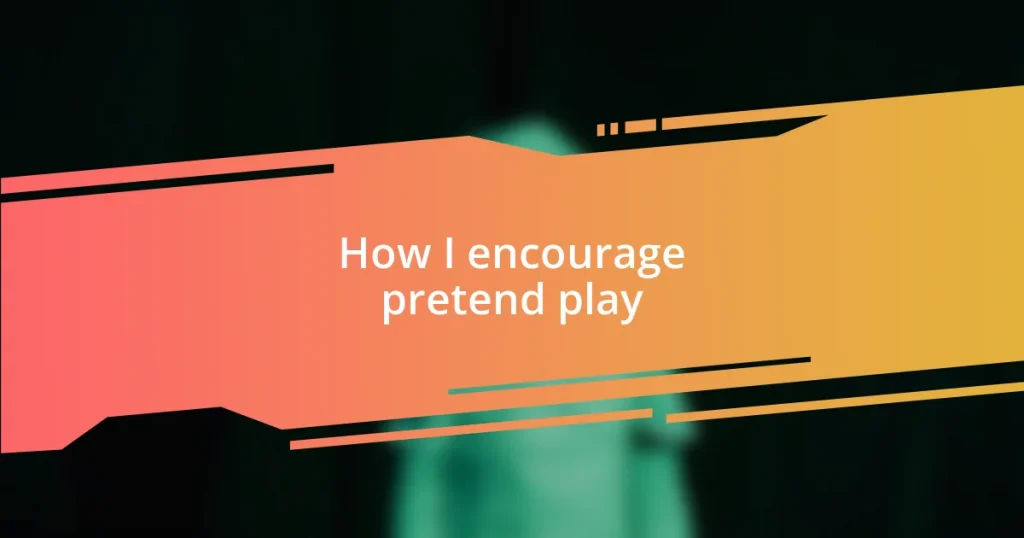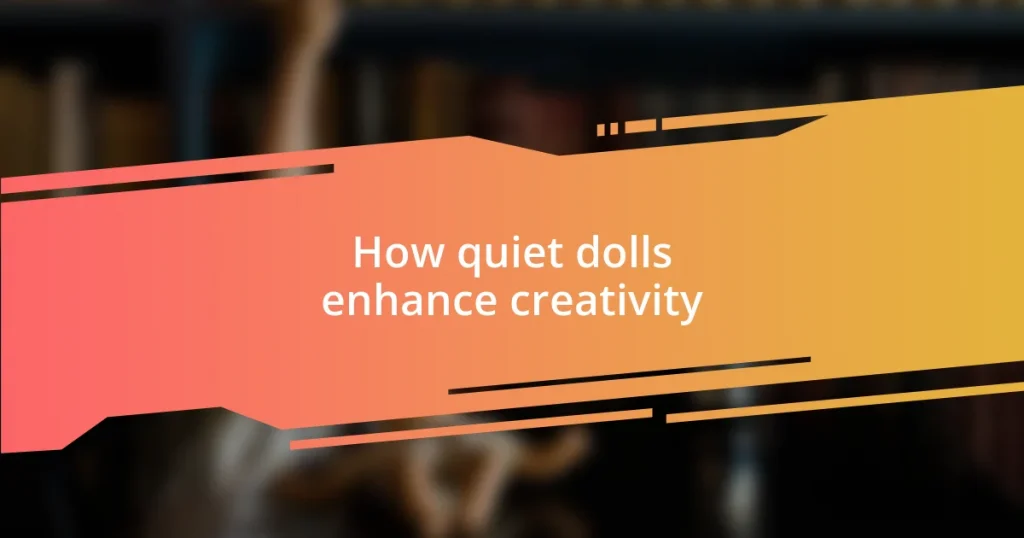Key takeaways:
- Pretend play enhances creativity, social skills, and emotional intelligence by allowing children to explore roles, negotiate, and empathize through imaginative scenarios.
- Creating a conducive environment with open-ended materials, minimized distractions, and intentional space layout fosters deeper engagement and exploration in pretend play.
- Different types of pretend play activities, such as role-playing, narrative play, and fantasy play, provide diverse opportunities for children to learn and express themselves while collaborating with peers.

Understanding pretend play benefits
Understanding pretend play benefits opens a window into a child’s imagination that’s surprisingly profound. For instance, when I witnessed my daughter transform a simple cardboard box into a spaceship, I felt a sense of awe—she wasn’t just playing; she was experimenting with concepts of space, adventure, and teamwork, all at once. Isn’t it fascinating how much creativity can stem from such a basic prop?
Not only does pretend play spark creativity, but it also nurtures social skills. I remember one afternoon when a few children were role-playing a veterinarians’ clinic. They began negotiating roles, sharing ideas, and even empathizing with “sick” stuffed animals. This moment highlighted how pretend play encourages collaboration and teaches conflict resolution naturally. Could there be a better way to learn those essential life skills?
Moreover, pretend play fosters emotional intelligence. I often find my kids reenacting real-life scenarios, like comforting a friend or going through a difficult day. By experiencing these situations through play, they gain valuable insights into their own feelings and others’. How incredible is it that through mere play, children cultivate an understanding of empathy and emotional processing? It’s a powerful reminder of how essential these moments of imaginative play are in childhood development.
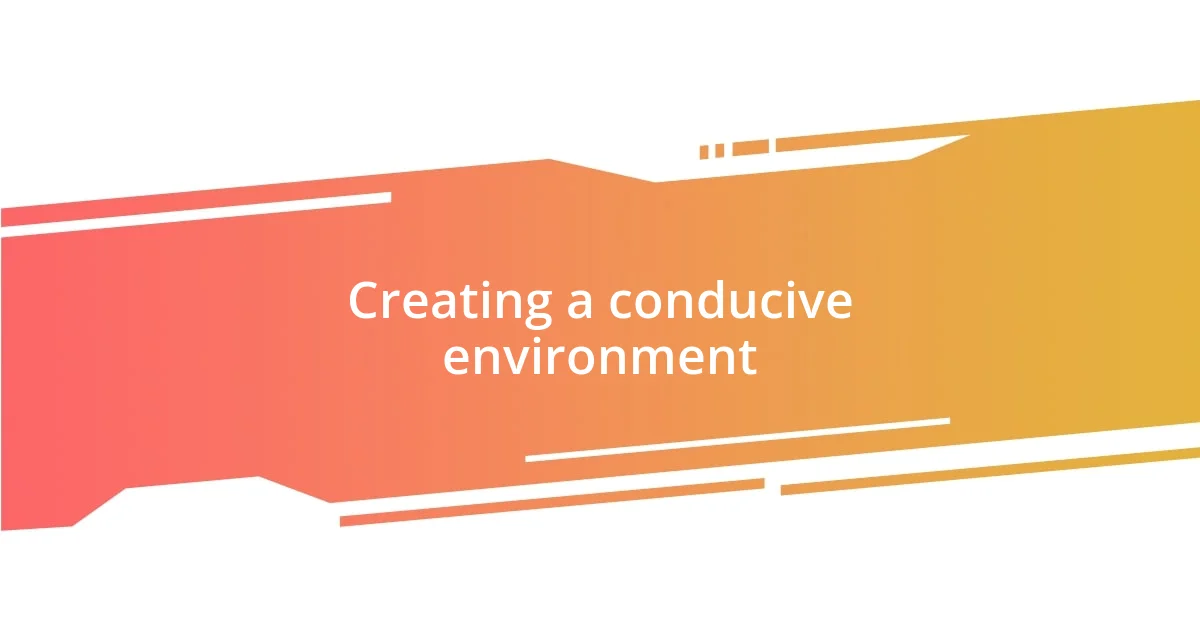
Creating a conducive environment
Creating a space that encourages pretend play is crucial for nurturing a child’s imagination. I often rearranged the playroom to give my kids more room to explore their creativity. By adding different props, like kitchen sets or dress-up clothes, I noticed how quickly they transformed ordinary moments into extraordinary adventures, like cooking for a family feast or dressing up as superheroes.
Another important element is minimizing distractions. I sometimes find that turning off the television or putting away electronic devices creates an atmosphere that’s ripe for imaginative play. One day, I decided to organize a “no-tech afternoon” and watched with delight as the kids constructed a massive fort using blankets and cushions, engaging in hours of storytelling. It reminded me how important it is to create intentional downtime for our children.
Lastly, it’s about incorporating open-ended materials. I love how items like blocks or simple art supplies encourage creativity without a defined end goal. I recall one rainy day when my children created an entire cityscape with recycled materials, crafting stories about the lives of its inhabitants. Witnessing their engagement made me realize how these elements are not just toys but tools for exploration in pretend play.
| Environment Element | Impact on Pretend Play |
|---|---|
| Space Layout | Encourages exploration and creativity |
| Minimized Distractions | Fosters deeper engagement in imaginative scenarios |
| Open-ended Materials | Supports creativity and storytelling development |
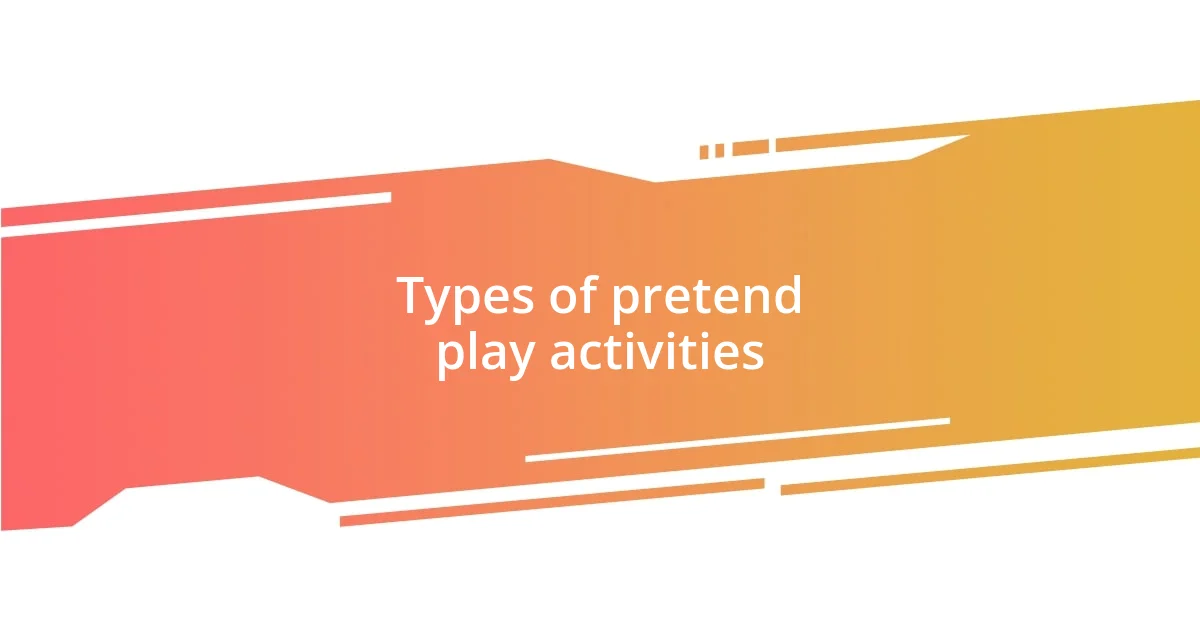
Types of pretend play activities
Pretend play activities can take many forms, each offering unique opportunities for children to express their creativity. I remember an afternoon when we transformed the living room into a bustling grocery store. My son took charge as the cashier, his tiny hands ringing up imaginary items while his friends clamored for pretend groceries. It was a magical moment that allowed them to understand commerce, cooperation, and even math—all wrapped up in fun.
Here are some types of pretend play activities I’ve found particularly effective:
- Role-playing: Children act out different characters or professions, like doctors or superheroes, which helps them explore their identities and social roles.
- Narrative play: Creating stories and scenarios with toys or puppets encourages language development and storytelling skills.
- Imitative play: Copying adults in everyday tasks, like cooking or gardening, nurtures practical skills and cultural understanding.
- Fantasy play: Engaging in imaginative worlds, such as kingdoms or alien planets, lets children express their wildest dreams and ideas.
- Symbolic play: Using objects to represent something else—for example, a stick as a sword—sparks creativity and abstract thinking.
Each activity I’ve seen opens doors to invaluable learning experiences, enriching a child’s growth in gentle yet profound ways.
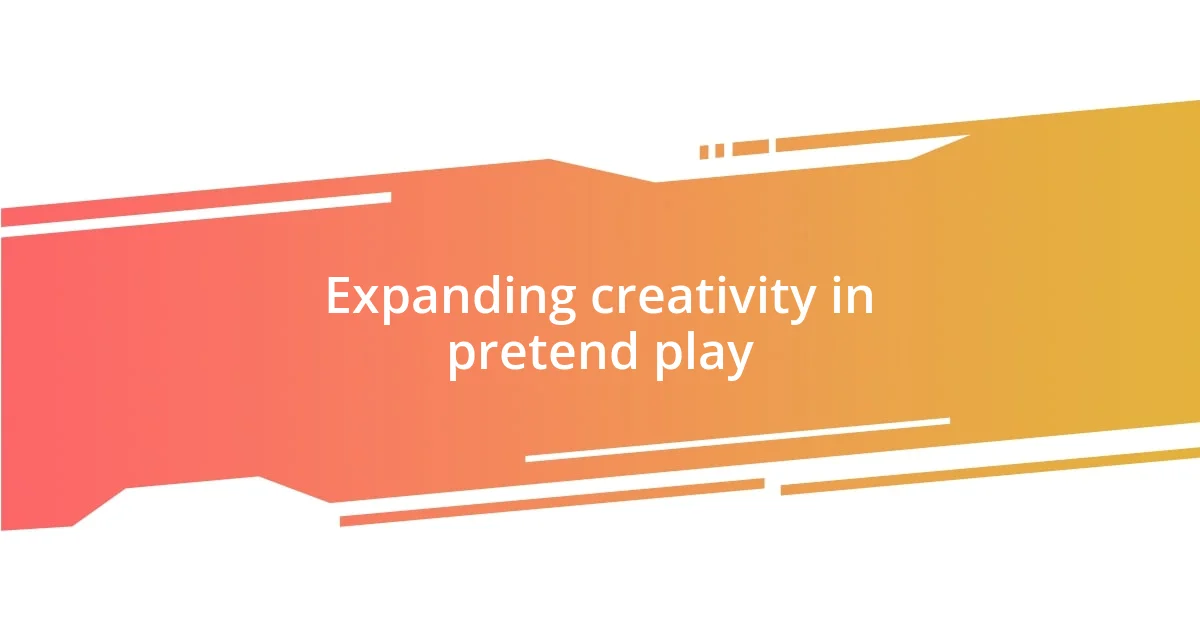
Expanding creativity in pretend play
Expanding creativity in pretend play is all about embracing spontaneity and discovery. I remember a day when my daughter grabbed a cardboard box and instantly declared it a spaceship. She invited her friends aboard, creating elaborate missions to distant planets. It made me think: how often do we underestimate the power of a simple box? In these moments, I realized that anything can spark creativity if we allow children the freedom to explore their imaginations.
I’ve also found that adding thematic elements can enhance the pretend play experience. One rainy afternoon, I surprised my kids with a pirate-themed day, complete with a treasure map and makeshift eye patches. As they ventured through their imagination, searching for buried treasure in our backyard, I felt a wave of joy witnessing their laughter and excitement. This vivid theme brought their ideas to life and transformed an ordinary day into an extraordinary adventure. Isn’t it amazing how a little imagination can make every day feel like a new quest?
Encouraging collaboration in pretend play can be a game-changer. I often noticed that when my kids invite friends to join their pretend worlds, the level of creativity multiplies. During one playdate, they huddled together to build a “wizarding school,” coming up with spells and lessons for each other. It didn’t just boost their enjoyment but also fostered teamwork and communication skills. Watching them work together made me appreciate that sometimes, the best ideas come from shared experiences. How can we cultivate and support these fun, collaborative moments in our children’s play?




